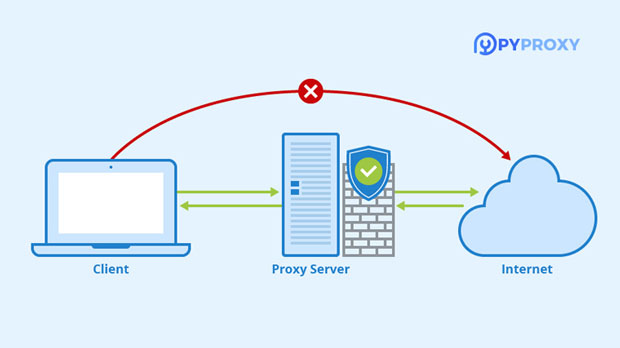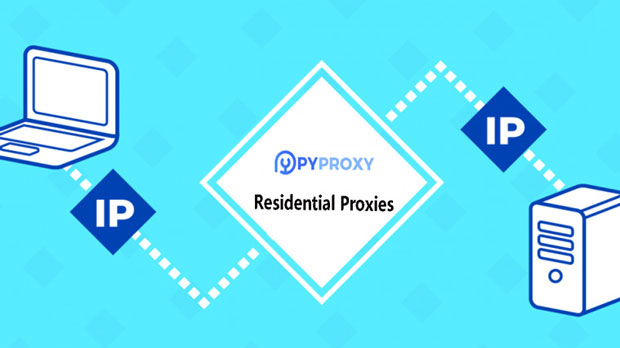In today’s interconnected world, online privacy and security are more critical than ever. A socks5 proxy provides a reliable solution for individuals and businesses looking to mask their IP address, bypass geo-restrictions, or enhance their internet privacy. However, when it comes to using a Socks5 proxy across multiple devices, ensuring proper functionality can sometimes be challenging. This article will explore how to ensure your Socks5 proxy operates seamlessly on various devices, including desktops, smartphones, and routers, offering practical insights to improve your experience and maximize the benefits of this proxy protocol. Understanding Socks5 Proxy: A Quick OverviewBefore delving into the process of ensuring proper Socks5 proxy operation, it's crucial to understand what it is and why it’s used. A Socks5 proxy is a type of internet protocol that routes your internet traffic through an intermediary server, thereby masking your real IP address. Unlike other proxies, such as HTTP or HTTPS proxies, Socks5 can handle any type of internet traffic, including websites, email, and even torrenting. The proxy is often preferred due to its ability to provide high-level anonymity and circumvent geographical restrictions.For socks5 proxies to function correctly across multiple devices, users must configure them properly on each device while considering various factors such as network compatibility, security, and performance.Key Considerations for Using Socks5 Proxy on Multiple DevicesThere are several factors to keep in mind when attempting to ensure the smooth operation of a Socks5 proxy across multiple devices. Let’s break them down:1. Device Compatibility and ConfigurationThe first thing to ensure is that the Socks5 proxy is compatible with each device you intend to use it on. Whether it's a desktop, laptop, smartphone, or router, each device may have different configuration methods. - Desktops and Laptops: On devices running Windows, macOS, or Linux, configuring a Socks5 proxy is relatively simple. Most browsers, operating systems, and apps allow you to input your Socks5 proxy details (IP address and port) in the network settings or application preferences. However, keep in mind that certain apps (like torrent clients) may require additional settings for Socks5 proxies to function properly. - Smartphones and Tablets: The process of setting up a Socks5 proxy on Android or iOS is different. Many apps on these devices, such as browsers and social media apps, may not natively support proxy settings. However, using third-party applications like VPN clients or dedicated Socks5 proxy apps can resolve this issue. On Android, the proxy settings can typically be configured through Wi-Fi settings or by using a specific app. For iOS, some apps can be used to route all traffic through a Socks5 proxy.- Routers: If you're looking to route all the devices in your home network through the same Socks5 proxy, configuring the proxy on your router is a great option. This ensures that every device connected to your Wi-Fi network benefits from the proxy, whether it's a smartphone, tablet, laptop, or smart TV. Routers that support custom firmware (such as DD-WRT or OpenWRT) can easily be configured for this purpose. 2. Network Performance and SpeedWhile a Socks5 proxy is an effective tool for online privacy and geo-bypassing, it may introduce latency or slower speeds due to the additional routing of your internet traffic through the proxy server. The impact on speed is particularly noticeable when using the proxy on multiple devices simultaneously, as each device requires bandwidth from the server.- Bandwidth Allocation: To ensure that the Socks5 proxy doesn’t negatively affect the performance of your network, choose a proxy provider with high bandwidth capacity. Make sure to test the connection speeds before deploying the proxy across multiple devices. - Use of Proxy Servers Close to Your Location: The closer your proxy server is to your geographic location, the faster your connection will be. When configuring Socks5 proxies on multiple devices, ensure that the proxy server you are using is optimized for your region.- Avoid Overloading the Proxy Server: If the proxy server is shared among multiple users or devices, too many simultaneous connections can overload the server and cause significant slowdowns. If you are noticing lag or delay, consider using a dedicated Socks5 server or switching to a higher-performing server.3. Security ConsiderationsWhen using a Socks5 proxy across multiple devices, it’s vital to ensure that all data transmitted through the proxy remains secure. While Socks5 provides basic anonymity by masking your IP address, it does not encrypt traffic. This means that sensitive data, such as passwords or credit card numbers, can still be vulnerable to interception.- Encrypt Your Traffic: To improve security, consider using a VPN in conjunction with your Socks5 proxy. A VPN encrypts your internet traffic, adding an extra layer of protection, especially when using public networks. - Authentication: Many Socks5 proxies require a username and password for authentication. Ensure that these credentials are strong and not reused across different services. Strong authentication mechanisms help secure your proxy access.- Device Security: When using a Socks5 proxy across multiple devices, make sure that each device has up-to-date security measures in place, such as firewalls, antivirus software, and secure Wi-Fi configurations.4. Testing and TroubleshootingOnce you’ve configured the Socks5 proxy on all your devices, it’s essential to perform thorough testing to ensure everything is working as expected.- Check for IP Address Masking: Use an IP checking website to confirm that your real IP address is masked. Test this across all devices to ensure consistency. - Test Application and Browser Compatibility: Not all applications and browsers handle Socks5 proxies in the same way. Some may work without issues, while others may require additional setup or support. Ensure that all apps requiring the proxy function correctly.- Identify Common Problems: Common issues when using Socks5 proxies include connection errors, slow speeds, or authentication failures. If any of these problems arise, double-check your proxy configuration settings, confirm server status, or consider switching to a different server if needed.5. Long-Term Maintenance and UpdatesOnce your Socks5 proxy is running smoothly on all devices, ongoing maintenance is required to ensure it continues functioning efficiently.- Regularly Update Your Proxy Configuration: Over time, proxy server IP addresses and ports may change, especially if you are using a third-party provider. Make sure to regularly check for updates and refresh your proxy settings across all devices.- Monitor Proxy Performance: Continuously monitor the performance of your Socks5 proxy to ensure that there are no major slowdowns or disruptions. Using tools like speed tests and server performance monitors can help in tracking any issues that may arise.- Stay Informed About Security Threats: As with any internet tool, staying updated on security risks is essential. Regularly check for vulnerabilities related to Socks5 proxies and take action to address them immediately, especially when using the proxy on multiple devices.ConclusionEnsuring that a Socks5 proxy works efficiently across multiple devices requires careful configuration, attention to performance, security, and ongoing maintenance. By understanding the setup process for different devices, optimizing network performance, securing your traffic, and regularly testing the system, you can make the most of your Socks5 proxy for a secure and seamless online experience. Whether you're using it on a desktop, smartphone, or router, a well-configured Socks5 proxy can significantly enhance your privacy and bypass restrictions without compromising performance.
Dec 23, 2024






















































